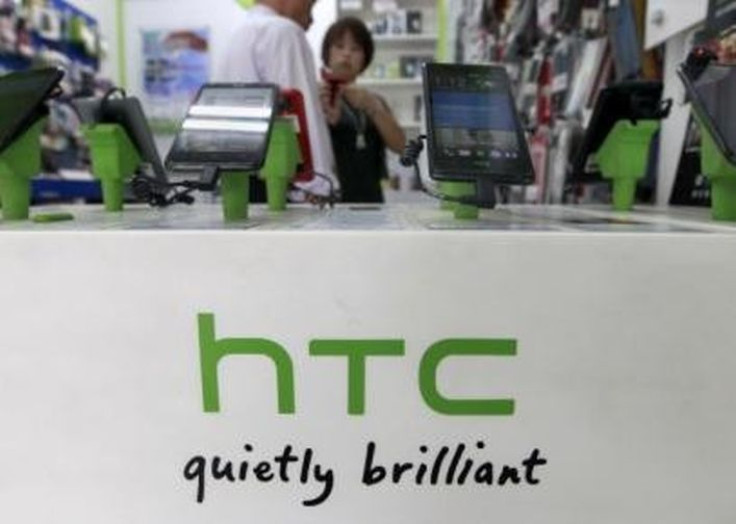HTC Desire Eye vs. OnePlus One – Specifications, Features And Price Comparison

HTC's selfie phone "Desire Eye" has recently been unveiled and the release date is slated for November. The OnePlus One, on the other hand, was released in June. Readers who are interested in purchasing the mighty OnePlus One or the latest HTC Desire Eye should check out this comparison.
Display, Exterior And Size
HTC Desire Eye comes with a 5.2-inch LCD display bundled with 1,080 x 1,920 pixels resolution, while the OnePlus One features a relatively bigger 5.5-inch LTPS LCD display and shares the same resolution as the HTC device. The pixel densities of OnePlus and HTC devices stand at 401 ppi and 424 ppi, respectively.
When it comes to design, the OnePlus One sports a magnesium chassis with matte-effect laden plastic rear, complemented by quality build. Moreover, the One's rear shell is alterable with a slew of options like the bamboo, kevlar and denim, GizMag reports. The HTC Desire Eye, on the other hand, comes with a high-quality plastic chassis. HTC has fine-tuned the front and rear cameras and hence, the modest Duo Camera seen in the 2014 flagship HTC One M8 is eliminated. And the smartphone features a physical camera shutter button. Generally speaking, the HTC Desire Eye has everything a flagship device should have, says ZDNet.
Speaking of size, the thickness and weight of the latest Desire Eye are 0.33-inch and 154 g respectively, while the OnePlus One is 0.35-inch thick and weighs 162 g. Therefore, the Desire Eye is both thinner and lighter than the OnePlus One.
Hardware, Software And Memory
Both the handsets are powered by the same quad-core (Qualcomm Snapdragon 801) Krait 400 processor. Nonetheless, the processors of the OnePlus and HTC phones are clocked at 2.5 GHz and 2.3 GHz respectively. While the OnePlus One is backed by a killer 3 GB of RAM, the HTC Desire Eye settles for 2 GB.
Furthermore, the OnePlus One runs on Android v4.4.2 KitKat OS and CyanogenMod 11S combination, whereas the HTC handset runs on Android v4.4.2 KitKat OS with HTC Sense v6 UI on top of it. When it comes to memory, the OnePlus offers 16 GB and 64 GB of internal storage options, while the Desire Eye comes equipped with 16 GB. Additionally, the Desire Eye supports expandable storage up to 128 GB, while the OnePlus One doesn't.
Camera And Battery
Both phones sport the same 13 MP rear-facing camera with dual-LED flash. Impressively, the Desire Eye features a 13 MP front-facing shooter with frontal dual-LED flash, staying true to the name selfie phone. The OnePlus One, meanwhile, features a respectable 5 MP unit as the secondary snapper.
The stand out camera features of the Desire Eye includes Split Capture and Crop-Me-In options. As the name implies, the Split Capture feature splits the captured picture into 50:50 by clubbing the pictures taken via the front and rear units. The Crop-Me-In feature can be used to append a user's image on to any other picture, like Photo-shopping an image. Plus, there are two camera-centric apps namely HTC Eye Experience and HTC Zoe, according to GSM Arena. On battery, the OnePlus One comes equipped with a powerful Li-Po 3100 mAh unit, whereas the Desire Eye houses an inferior Li-Ion 2400 mAh unit.
Additional Features
1. The HTC handset comes with the well-known BoomSound speakers. Additionally, it features a water- and dust-resistant exterior (IPX7 certified), while the OnePlus One doesn't.
2. There are a total of three microphones on the HTC Desire Eye. The microphones are located near the selfie shooter, one at the rear and another one on the bottom of the handset, GSM Arena reports.
3. While the OnePlus One employs micro-SIM, the HTC handset supports nano-SIM. Furthermore, both the phones support NFC and 4G LTE connectivity.
4. HTC's camera-specific Zoe app provides collaborative video editing support. Additionally, the app can be paired with "Re," the new action camera from the company. The good news, however, is that Android-based smartphones across the globe can benefit from this app, since HTC has not made it exclusive to its handsets. And Zoe's Apple iOS compatible app will be released by 2014 end.
5. Also, HTC's Eye Experience camera app is not exclusive to the Desire Eye. The company is planning to roll out the app to One Mini 2, One Max, One (E8), One (M7), One Remix, HTC One (M8), One Mini, Desire 612 and Desire 816 shortly.
6. The OnePlus device comes in Silk White and Sandstone Black, whereas the HTC device comes in Blue, Red and White hues. Readers can purchase the much-loved Bamboo Style Swap Cover for the OnePlus handset. This will set the buyers back by $49.
Price
The soon-to-be-released HTC Desire Eye will be an AT&T-exclusive smartphone in the U.S. and it is priced at 529 euros in France that roughly translates to US$675 and AU$770, reports NWE. The OnePlus One, on the other hand, can be purchased for AU$549.95. Notably, OnePlus' invitation-only purchase model has been put to rest. The company will opt for pre-order and flash sale models.
Also Read
1. Apple iPad Mini 3 vs. iPad Mini 2: Should You Upgrade? - [Read]
2. Apple iPad Air 2 vs. iPad Air: Should You Upgrade? - [Read]
3. HTC Desire Eye vs. Xiaomi Mi4 - Specifications, Features And Price Comparison - [Read]






